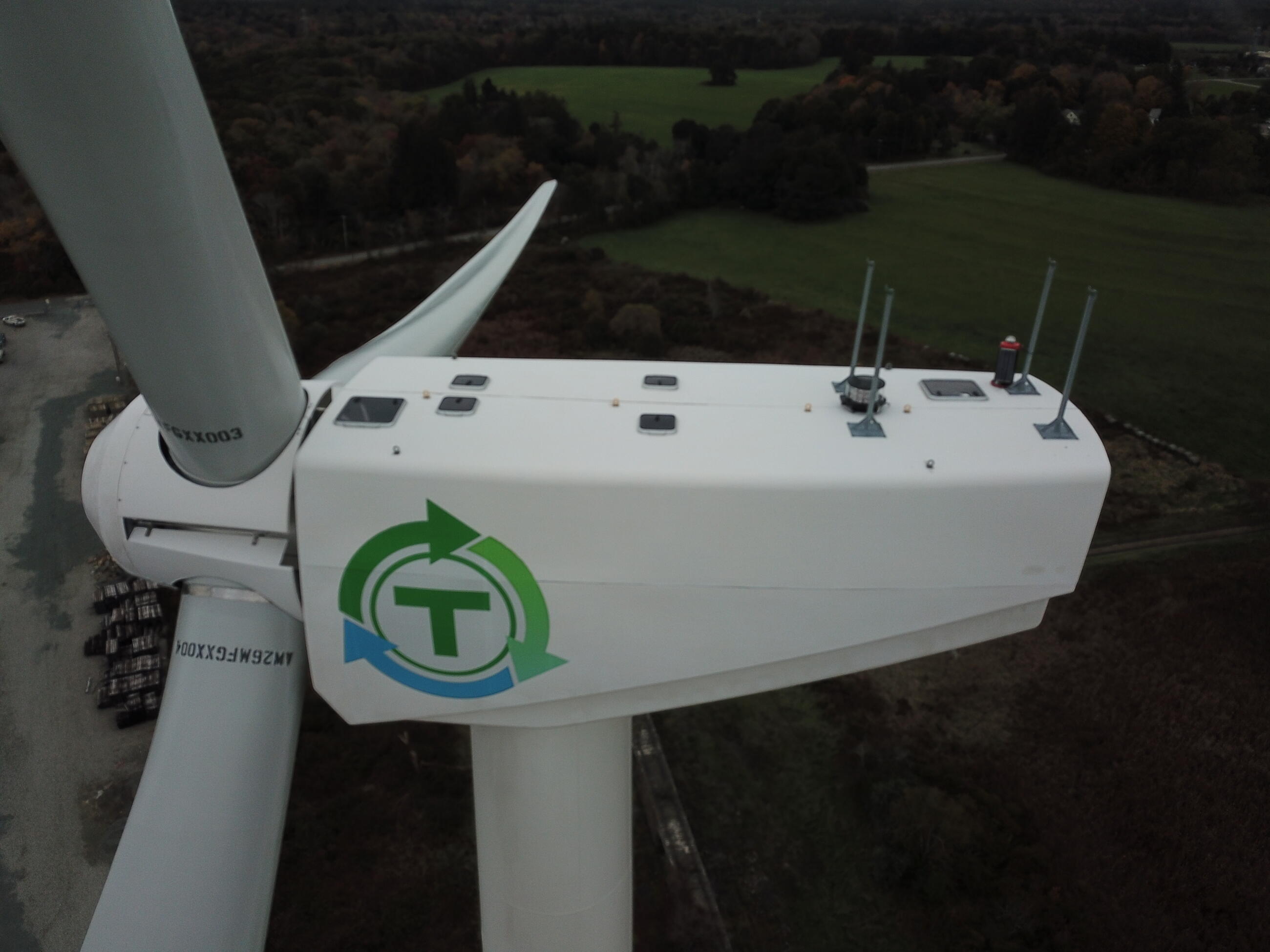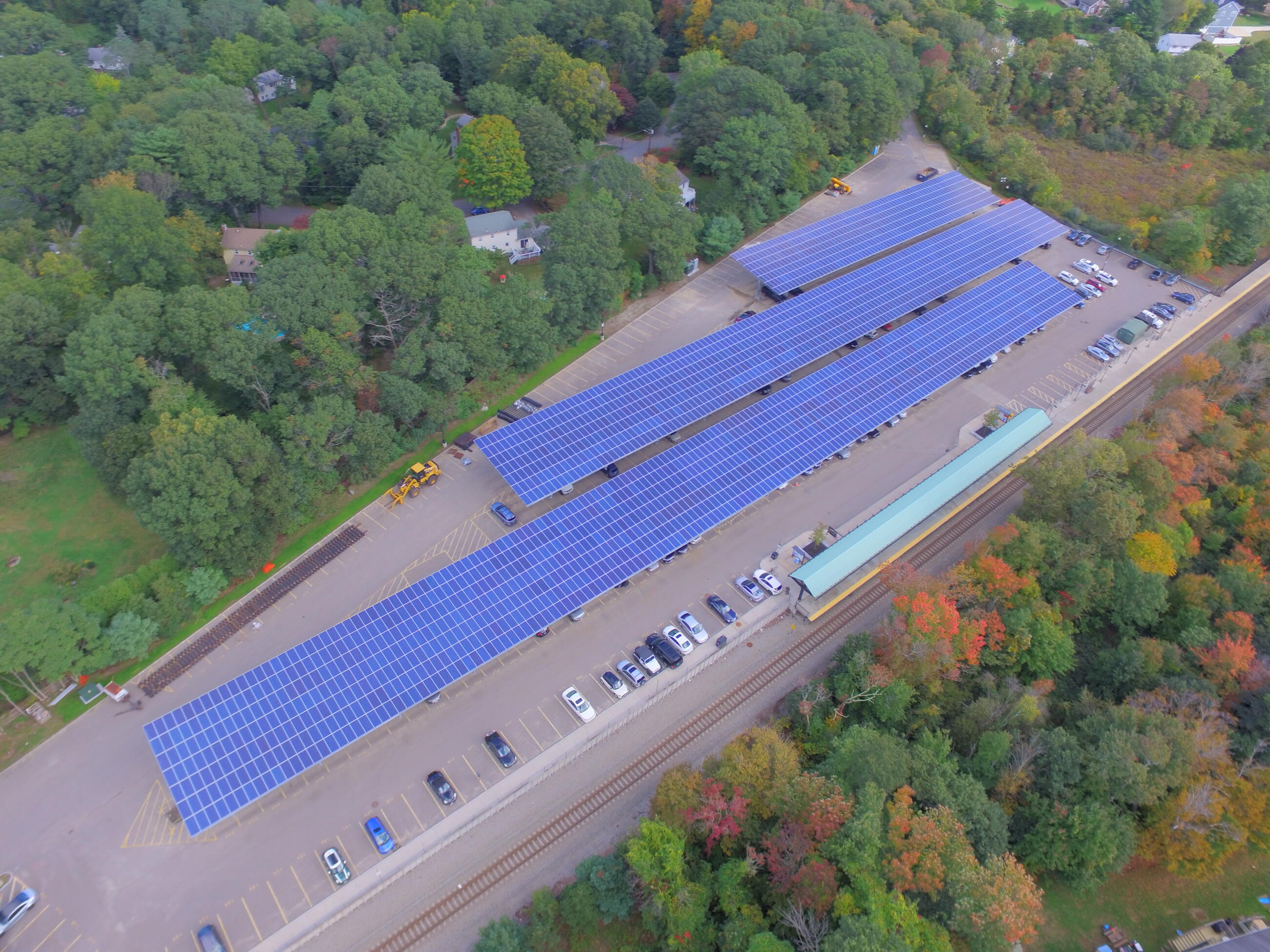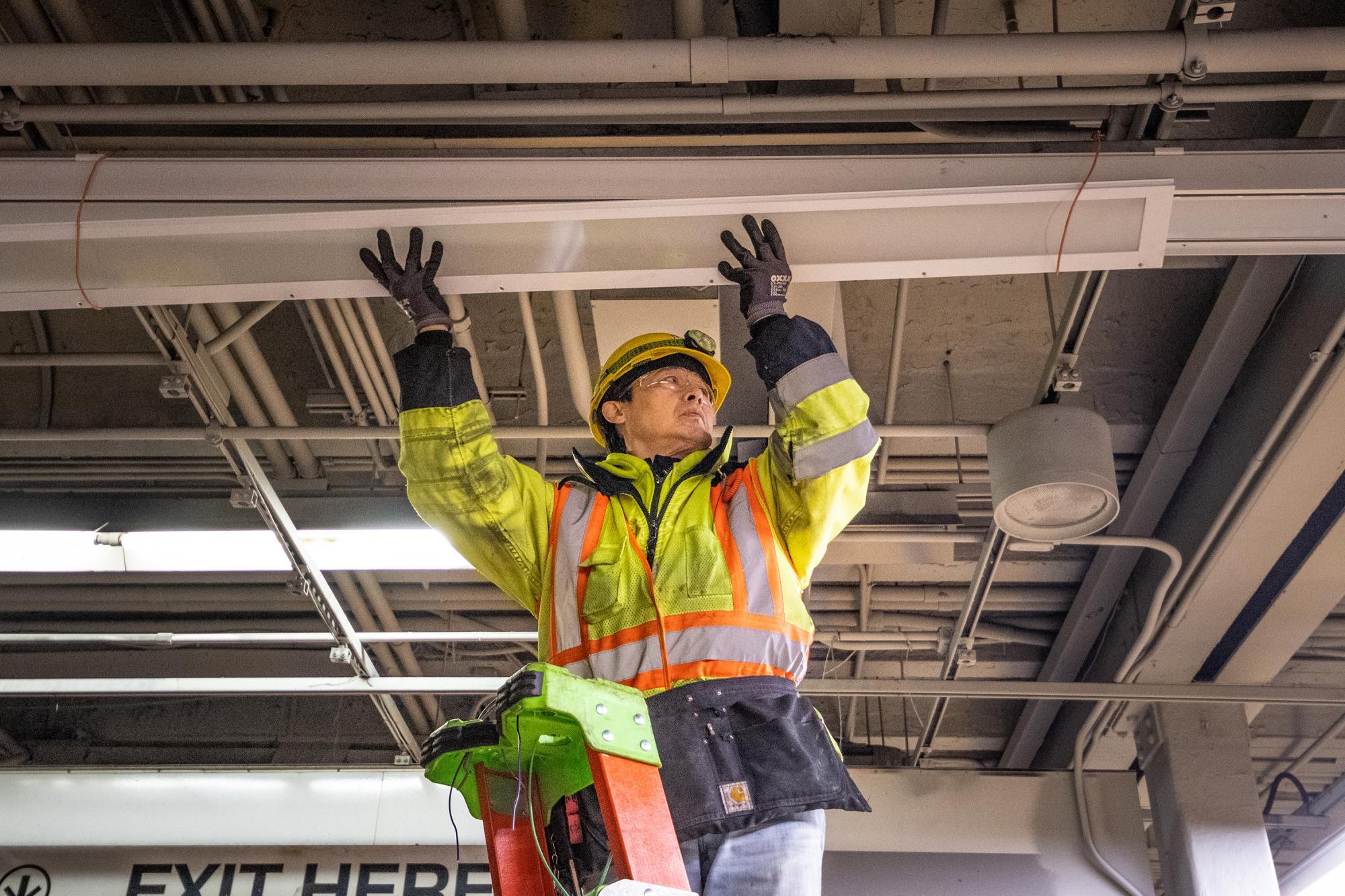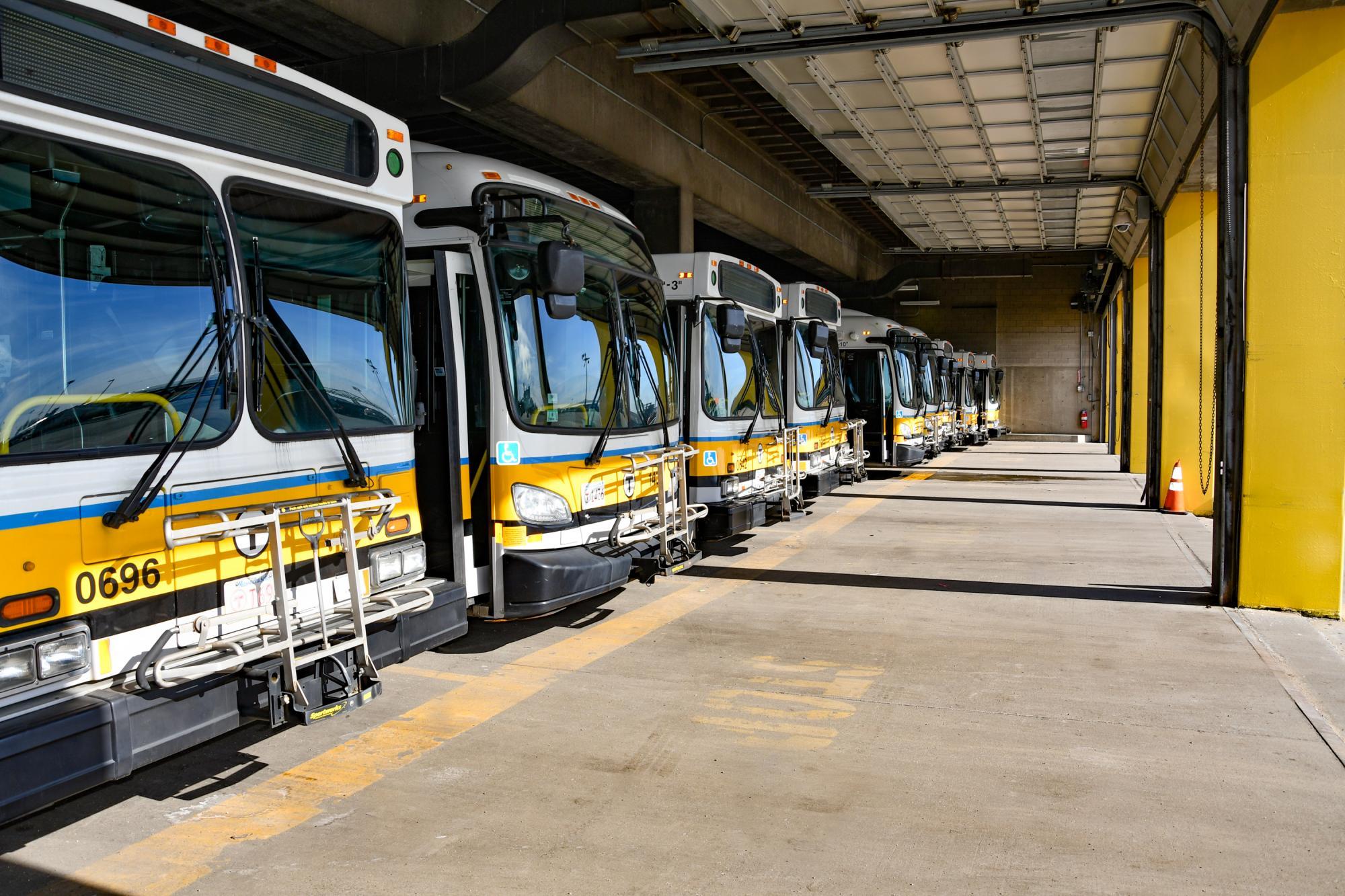Energy Management
The MBTA’s approach to energy management consists of three fundamental ideas:
- Reduce the use of fossil fuels
- Invest in renewable and clean energy
- Efficient management of energy assets
By taking a holistic approach to energy management, we can reduce our carbon footprint, use energy more efficiently, and stabilize our energy budget.
As of January 2021, the MBTA is powered by 100% renewable electricity.
Renewable Energy Resources
The MBTA will purchase its electricity and Renewable Energy Credits (RECs) from renewable energy providers in New England.
Benefits include:
- The MBTA can certify the use of renewable energy in its portfolio
- RECs provide a dedicated stake in electricity produced from certified renewable energy power plants
- RECs allow energy producers to finance new clean energy projects in the region
In addition to the purchase of renewable energy, the MBTA has some on-site renewable energy infrastructure in various locations on MBTA property, with more to come. The projects below are just a few that will help the MBTA meet our clean energy goal.
Wind Energy

The are two MBTA wind turbines:
The Kingston Turbine
Located near the Kingston Commuter Rail station, it powers both the station and the adjacent layover facility. Energy created by this turbine is:
- Used to power station lighting
- Used to power the units that keep train engines warm overnight in cold weather (without this clean energy, trains would need to idle overnight to keep from freezing)
The Bridgewater Turbine
Located near the Bridgewater Commuter Rail station, it powers both the station and the adjacent layover facility. Energy created by this turbine is:
- Returned back to the local electrical grid for use by others
- Acts as an offset for electricity consumed by the MBTA at other locations.
Funding for both turbines is provided by:
- The Federal Transit Administration (FTA)
- The Transportation Investments for Greenhouse Gas and Energy Reductions (TIGGER)
- A grant from the Massachusetts Clean Energy Center (MassCEC)
Solar Energy

The MBTA has partnered with True Green Capital to install, operate, and maintain solar canopies at MBTA parking lots.
As of 2020, there are three solar canopies generating energy on MBTA property. In the next two years, up to 25 new locations may be complete, with the potential to create up to 25 megawatts of solar energy capacity—expanding the Commonwealth’s renewable energy portfolio and reducing the cost of both electricity and snow removal for the MBTA.
This is in addition to the small scale solar energy arrays on MBTA property at Orient Heights and Braintree stations. The MBTA is also working toward adding solar arrays to new capital projects like Quincy Bus Facility and Riverside parking garage.
Building a Better T
As part of our $9.6 billion, 5-year capital investment plan, we're renovating stations, modernizing fare collection systems, upgrading services for our buses, subways, and ferries, and improving the accessibility of the entire system.
Related Projects
Bus Facility Modernization
Our new Quincy garage will be able to accommodate a zero-emissions fleet of battery-electric buses.
Energy Efficiency Upgrades

More than 70,000 light fixtures help MBTA customers navigate through stations and platforms.
Until recently, the majority of these fixtures used inefficient fluorescent bulbs. Swapping those out for T-8 and induction fixtures has saved the MBTA $783 for every kW, or nearly $1 million a year.
Over the past few years, the MBTA has implemented over 90 energy efficiency projects that have resulted in an energy reduction of 75 million kWH and 117 million pounds of greenhouse gases.
Projects include upgrades to:
- Station and facility lighting
- Boilers and HVAC systems
- Equipment (pumps, motors, drives, compressed air, etc.)
The MBTA has partnered with two local utility companies (National Grid and Eversource) for a Three-Year (FY21–FY23) Energy Efficiency Program. This program includes $28 million in capital investments for energy upgrades at 85 MBTA facilities.
Upon completion of these, the MBTA will save over 30 million kWh of electricity and 47 million tons of greenhouse gases. This will also result in significant financial savings.
Recently, we upgraded the track and switch heater systems, which dramatically reduced energy usage.
Work included adding 700 energy-efficient heaters for the track system. With this upgrade, the heater system is now centrally controlled in the MBTA Control Center so we can control when the heaters are turned on—previously, heaters were turned on in November and turned off in April. As of 2020, we are able to turn the heaters on manually—and only when the weather drops below 38 degrees.
This saves 31 million kWH of electricity and 48.3 million pounds of greenhouse gases. To further improve this system, we will tie the heating system to a cloud-based weather station so that the units are turned on and off automatically.
MBTA signals are lit by 2,300 specially-made LED bulbs. While the old incandescent signal bulbs lasted only six weeks, the new LED bulbs can last up to eight years, using a fraction of the energy of an incandescent.
In the first three years after the bulbs were installed, the MBTA was able to save over $1 million in maintenance costs for signal lights.
Tracking Energy Consumption
To track and manage energy consumption, the MBTA uses an Enterprise Energy Management System (EEMS) to closely monitor energy consumption and billings to see if there are aberrations or areas where energy consumption is too high. This system provides critical data for the more than 600 utility accounts in the MBTA system.
Among other metrics, the EEMS tracks “Energy Consumption per Passenger Trip” and “Energy Consumption per Mile.” The current system includes data from 2009 to today and tracks the use of electricity, diesel, gasoline, compressed natural gas (CNG), steam, and jet fuel.
Building a Better T
As part of our $9.6 billion, 5-year capital investment plan, we're renovating stations, modernizing fare collection systems, upgrading services for our buses, subways, and ferries, and improving the accessibility of the entire system.
Related Projects
Bus Facility Modernization
Our new Quincy garage will be able to accommodate a zero-emissions fleet of battery-electric buses.
